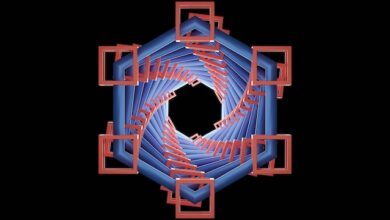Deepfake Technology: The Double-Edged Sword of the Digital Age

Deepfake technology has rapidly emerged as a revolutionary and controversial advancement in the digital realm. It allows for the creation of incredibly realistic and often deceptive videos and audio recordings, in which individuals appear to say or do things they never actually did. While this technology has the potential for various applications, from entertainment to cybersecurity, it also raises significant ethical, legal, and societal concerns. In this article, we will delve into the world of deepfakes, exploring what they are, their implications, and the steps being taken to manage their impact.
Understanding Deepfake Technology
Deepfake is a portmanteau of “deep learning” and “fake.” It employs artificial intelligence techniques, particularly deep neural networks, to manipulate and synthesize media content, primarily video and audio. Deep learning algorithms can analyze and recreate patterns in data, making it possible to replace one person’s face or voice with another, even in real-time. The technology has advanced to the point where the results can be virtually indistinguishable from real recordings.
Implications and Concerns
- Misinformation and Disinformation: Deepfakes pose a serious threat to the credibility of visual and auditory evidence. In an era already plagued by misinformation, deepfake videos can make it nearly impossible to distinguish between genuine and fabricated content. This can have significant consequences for public opinion, political discourse, and journalism.
- Privacy Invasion: The ability to create hyper-realistic fake videos raises concerns about personal privacy. Individuals can be portrayed in compromising or embarrassing situations, and their reputations can be tarnished without their consent. Consent and control over one’s image become critical issues.
- Fraud and Cybersecurity: Deepfake technology can also be used for fraudulent activities. Criminals can use deepfakes to impersonate someone in an attempt to gain access to secure information or deceive people into taking certain actions. This has significant implications for cybersecurity.
- Legal and Ethical Quandaries: As deepfakes become more prevalent, lawmakers and legal authorities are grappling with the need for regulation. Determining the legal ramifications of deepfake creation and distribution is a complex issue that involves navigating issues like defamation, privacy, and intellectual property rights.
- Erosion of Trust: The presence of deepfakes may contribute to a general erosion of trust in online content and media. People might become increasingly skeptical, even of genuine content, which can be detrimental to the functioning of a democratic society.
Mitigating the Impact
Efforts to address the challenges posed by deepfake technology are underway:
- Detection Tools: Researchers and tech companies are developing deepfake detection tools that use AI to identify inconsistencies in videos and audio. These tools are vital for distinguishing real from manipulated content.
- Legislation: Some countries have started to enact laws specifically targeting deepfake creation and distribution. These laws outline the consequences for those who misuse the technology.
- Public Awareness: Raising awareness about the existence of deepfake technology and its potential consequences is crucial. This can help individuals become more discerning consumers of online content.
- Digital Literacy: Developing media literacy skills can empower individuals to evaluate the content they encounter online critically. Educational programs are being established to teach people how to recognize and deal with deepfakes.
- Industry Self-Regulation: Technology companies are working to develop ethical guidelines and standards for the responsible use of AI and deepfake technology.
Conclusion
Deepfake technology is a double-edged sword that holds great promise while carrying significant risks. While it can be used for legitimate purposes such as entertainment, research, and cybersecurity, it also presents challenges in terms of privacy, misinformation, and trust. As we continue to navigate the complex landscape of deepfakes, it’s crucial to strike a balance between harnessing their potential and addressing the associated concerns to preserve the integrity of our digital world. It’s a call to action for governments, tech companies, and individuals to work together to ensure that deepfake technology is developed and used responsibly.




